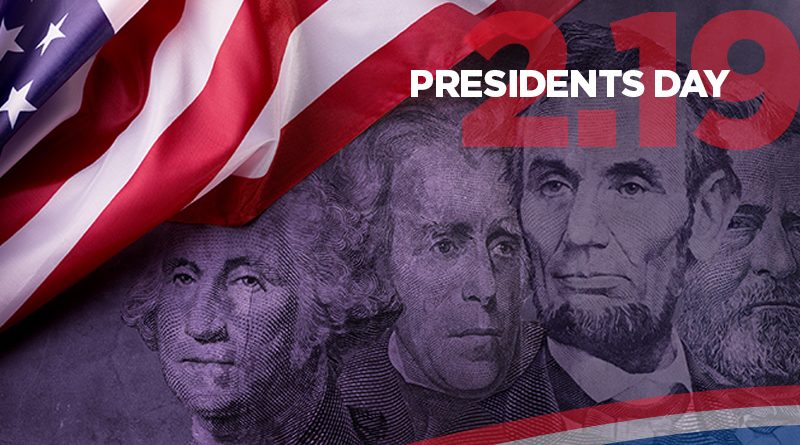Presidents Day – 2024
Americans observe Presidents Day as a show of patriotism. While this is to be expected, we also don’t give the subject much attention outside of the traditional artwork our kids bring home. With that in mind, it may be of interest to know how it became an annual national commemoration. The history is actually quite fascinating. GrantWatch recognizes the important sense of history and community that this observance symbolizes. In fact, GrantWatch offers a list of close to 1,700 grants in its Community (and Economic Development) grants category that can help with the broader commemoration that this observance represents.
History Regarding National Presidents Day Observance
The following Presidents Day facts trace the path taken to make this day a celebration of all U.S. presidents.
- The origin of Presidents’ Day lies in the 1880s, when the birthday of Washington – commander of the Continental Amy during the American Revolution and the first president of the United States – was first celebrated as a federal holiday.
- In 1968 Congress passed the Uniform Monday Holiday Bill, which moved a number of federal holidays to Mondays. The change was designed to schedule certain holidays so that workers had a number of long weekends throughout the year, but it has been opposed (sic) by those who believe that those holidays should be celebrated on the dates they actually commemorate.
- During debate on the bill, it was proposed that Washington’s Birthday be renamed Presidents’ Day to honour (sic) the birthdays of both Washington (February 22) and Lincoln (February 12); although Lincoln’s birthday was celebrated in many states, it was never an official federal holiday. Following much discussion, Congress rejected the name change. After the bill went into effect in 1971, however, Presidents’ Day became the commonly accepted name, due in part to retailers’ use of the name to promote sales and holiday’s proximity to Lincoln’s birthday.
In honor of National Presidents Day, below are grants currently available that address community and economic development grant funding.
Community (and Economic Development) Grants
- Grants to nongovernmental organizations, including independent media and civic organizations and associations, to promote democratic values worldwide. Funding is to promote human rights, support freedom of information, and strengthen democratic political processes and institutions.
- There are grants to eligible nonprofits, agencies, and public schools for education and health programs to benefit disadvantaged populations. Funding is for programs to enhance STEM educational opportunities for K-12 students and programs that improve the health of local residents.
- In addition, grants to nonprofits, government agencies, special districts, and Tribes to support the rehabilitation of historic-properties in rural communities. Funding is for preservation projects for historic sites, including architectural and engineering services, through subgrants to communities determined rural by the US Bureau of the Census.
- Grants to Indian Tribes and housing entities to promote affordable/safe housing on Indian reservations and other Indian areas. Funding is to benefit low-income Indian families. Priority will be for projects that spur construction and rehabilitation while considering need and administrative capacity.
- There are grants to nonprofits to increase organizational capacity to serve low-income rural residents. The purpose of the funding is to strengthen the capacity of organizations to carry out affordable housing and community development activities in rural areas for the benefit of low and moderate-income families and individuals.
Additional Community (and Economic Development) Grants
- Also, grants to agricultural producers and small non-urban businesses for environmentally-friendly energy improvements. Funding is for installing renewable energy systems or making energy efficiency improvements. Agricultural producers may also apply for new energy-efficient equipment and new system loans for agricultural production and processing.
- Grants to eligible nonprofits for programs and initiatives to develop local communities. Areas of focus include strengthening small businesses and building career pathways.
- There are grants to eligible nonprofits to benefit local residents. Funding is for activities and programs within the focus areas of community development, human services, veteran and military support, education, cultural affairs and diversity, and health.
- In addition, grants to eligible community nonprofits for programs in education, human services, healthcare, and medical research.
- Lastly, grants to eligible nonprofits for activities to further economic mobility/racial equity. Funding supports policy research, development, and advocacy in the areas of democracy, culture, education and economic mobility, environment, gun violence prevention and justice reform, and journalism.
We hope this information will add value to your upcoming observance of Presidents Day!
About GrantWatch
With close to 8,000 grants currently available, GrantWatch.com is the leading grant listing directory. Upgrade to a MemberPlus+ subscription to view the full grant details, including eligibility criteria and application information. For more information, you can also visit the GrantWatch FAQ page. To conclude, to see the great value of all 20 of the top GrantWatch features, click here.
Sourced cited: britannica.com, “Presidents’ Day“

